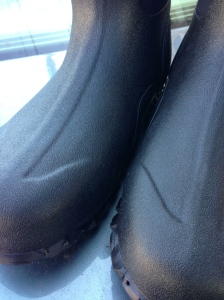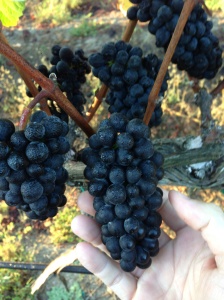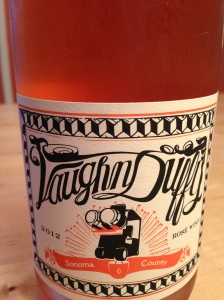Totally lame on my part; I was going to chronicle my Harvest 2012 experience, but with Harvest 2013 right around the corner and one post to my name related to Harvest 2012, the “Chronicling Harvest 2012” ship has passed. Old news sucks to read, but sucks even more to try and write. I still need some closure to my experience though, so before I even begin to think about Harvest 2013, here are the top ten random things, in no particular order, that I learned, remembered, enjoyed, hated and experienced during my first experience as a harvest intern.
1.) Cleaning, Sanitizing, Cleaning and Sanitizing – It’s true what those who have come before you say. Crush is 99% cleaning and sanitizing and I now understand why. You don’t want some pesky bacteria spoiling what you only have one shot per year to do, which is making good wine. It’s too expensive of a proposition to not be maniacal about keeping everything in the winery cleaned and sanitized.
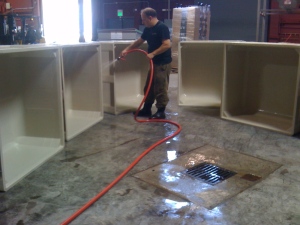
Macro bins being prepped for duty.
2.) You meet great people – This goes without saying. You chose to be a harvest intern because you love the wine business, because let’s face it; there are better financial options out there for a job. However, like minds and like passion create great friendships and are ultimately priceless.

The U.K., Japan, D.C.; harvest interns come from all over the world!
3.) Insects – How can you forget that mysterious tickling under your shirt or pants? It’s amazing how many earwigs and other creepy crawly things find their way into the bins and on to the sorting tables and eventually into your clothes.

This could’ve made my wife a widow..not really, but it was still scary to see crawling out of the bin.
4.) 60+ hours worked per week in a winery really gets you in good shape – As I’ve begun my ascent into middle-age territory, I actually started to wonder if I still had muscles. Palette jacking, daily punch downs and believe it or not, scrubbing, actually got my arms looking pretty ripped.
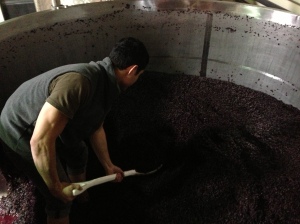
Notice the rippled arms and defined triceps. Now I only wish it were actually me and not Sean Gilchrest.
5.) How much you learn probably really depends on the size of operation you work – As a first timer, anything and everything was new to me, so the overall learning experience was good. Because I was at a small, “artisan” operation, the winemaker was very hands-on with every step of the winemaking process, so he wasn’t always readily available or accessible.

Ed Kurtzman doing it all. Here on the forklift dumping chardonnay into the press.
6.) Urban wine making – It was insanely cool to be able to work at a winery in the city of San Francisco. Most people I spoke to about my job were very surprised to find out that I worked only seven miles from where I lived in the Richmond District neighborhood in San Francisco. In fact, there are several wineries in the SF that have grapes trucked in from all over the state to have their wines made in the city.

Standing in the winery loading dock, looking out across the street. Notice the lack of a vineyard or any vines.
7.) Lunch – Food from the neighborhood restaurants and a little wine provided to us by the winery every day was always a welcome moment.

Beets, expensive beef, arugula, poached farm-fresh egg on top….you know…fancy San Francisco food.
8.) At some point, the 60+ hours worked per week sucks – Self-explanatory

Tired and drained…just like the grapes behind me, ha ha!
9.) I’m thankful that my friend helped me get this harvest job. Based on the 2013 job posting requirements, as well as what interviewers told me during the interviews I had, having one harvest under my belt definitely made it a lot easier to get my foot in the door for 2013.
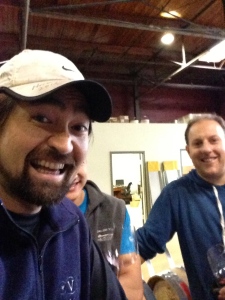
Me with Tim Telli in the background, the man who got me this gig.
10.) Dreams of making my own wine – The overall experience has convinced me to consider a career in the production side of the business; it’s just a matter of whether I want to work in a winery full-time or if I want to take the plunge and launch my own brand on the side…yikes! We’ll see, as usual, this blog will keep you posted.

Yes, the expression says it all – wine making looks fun.


